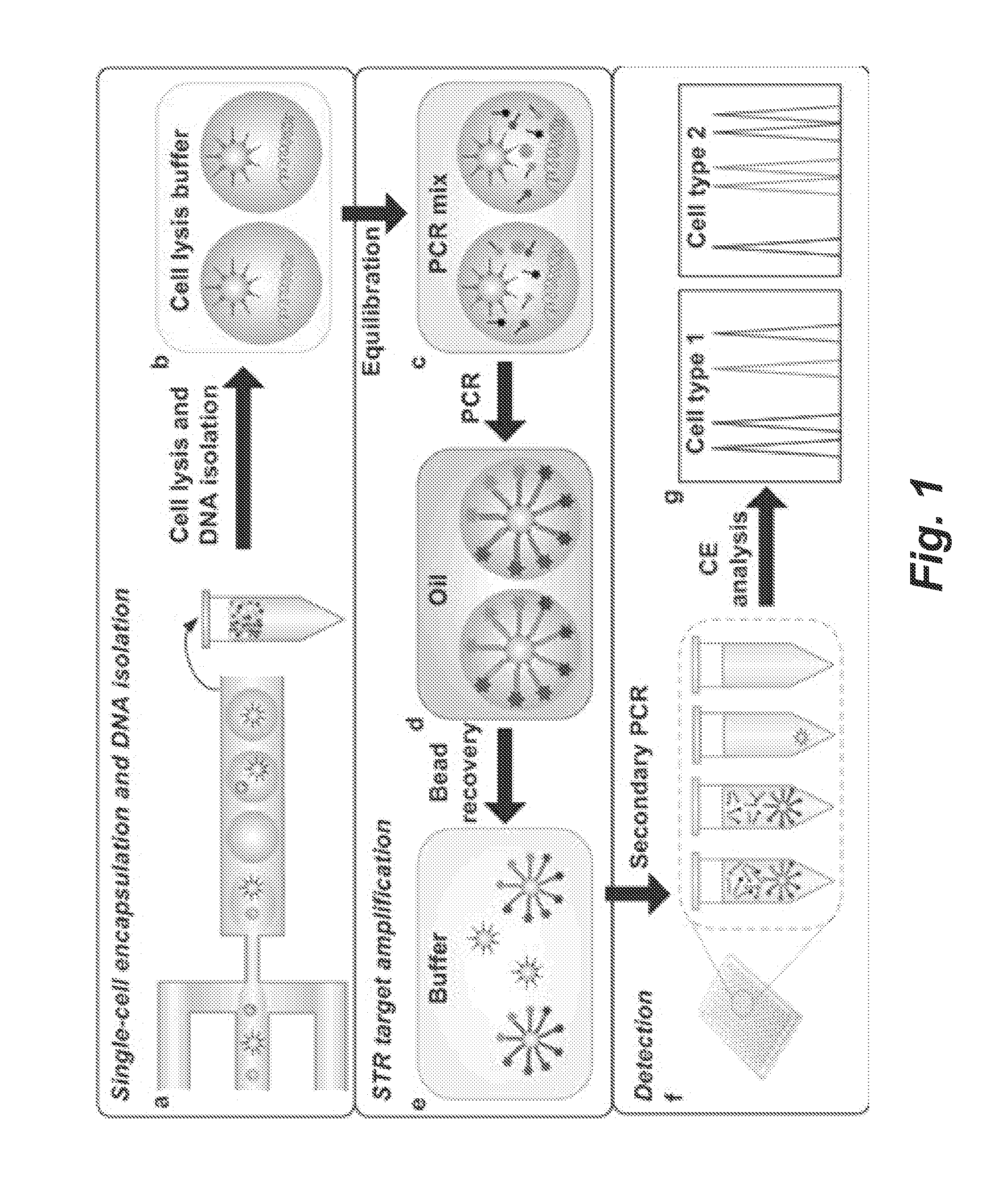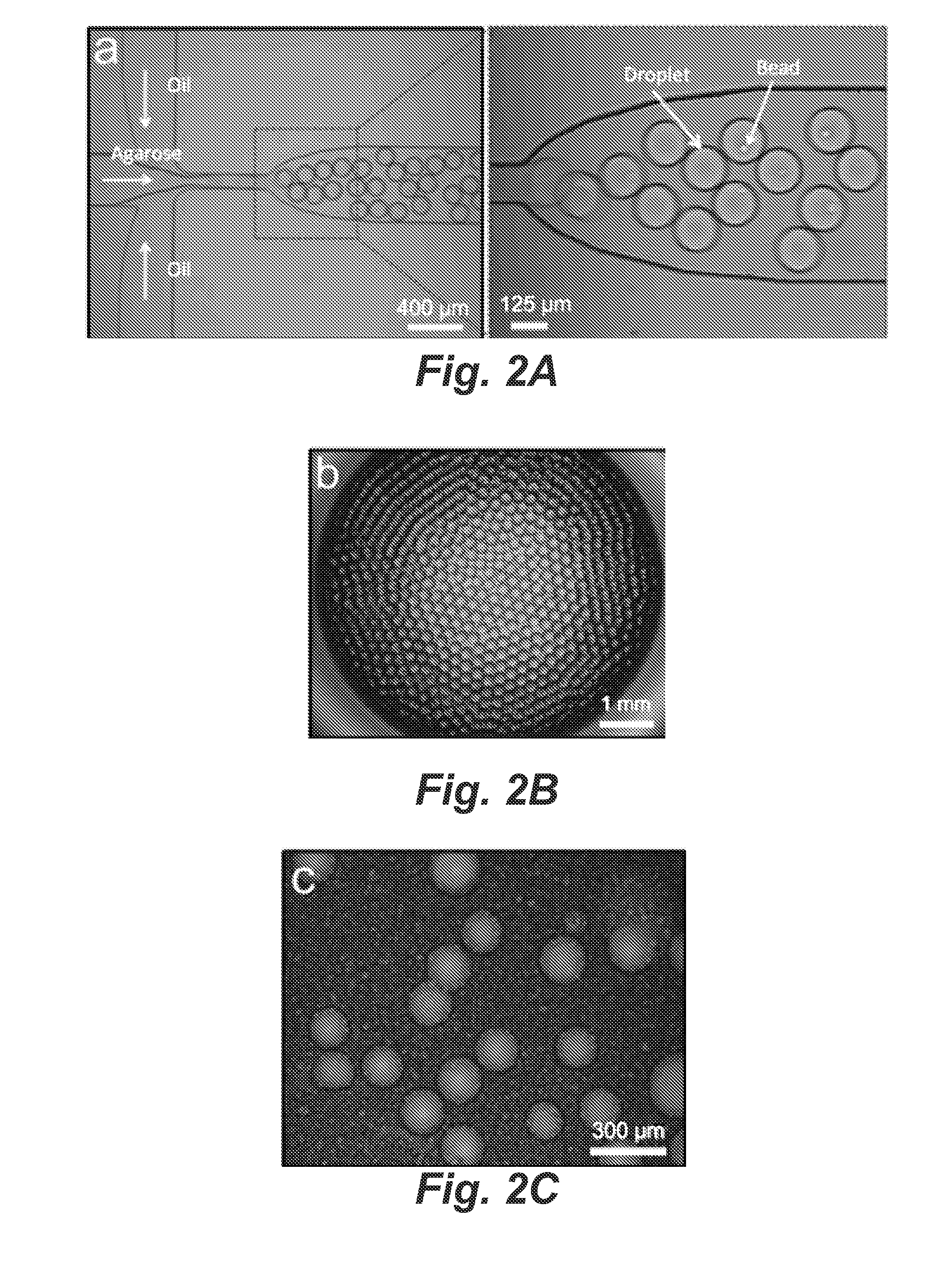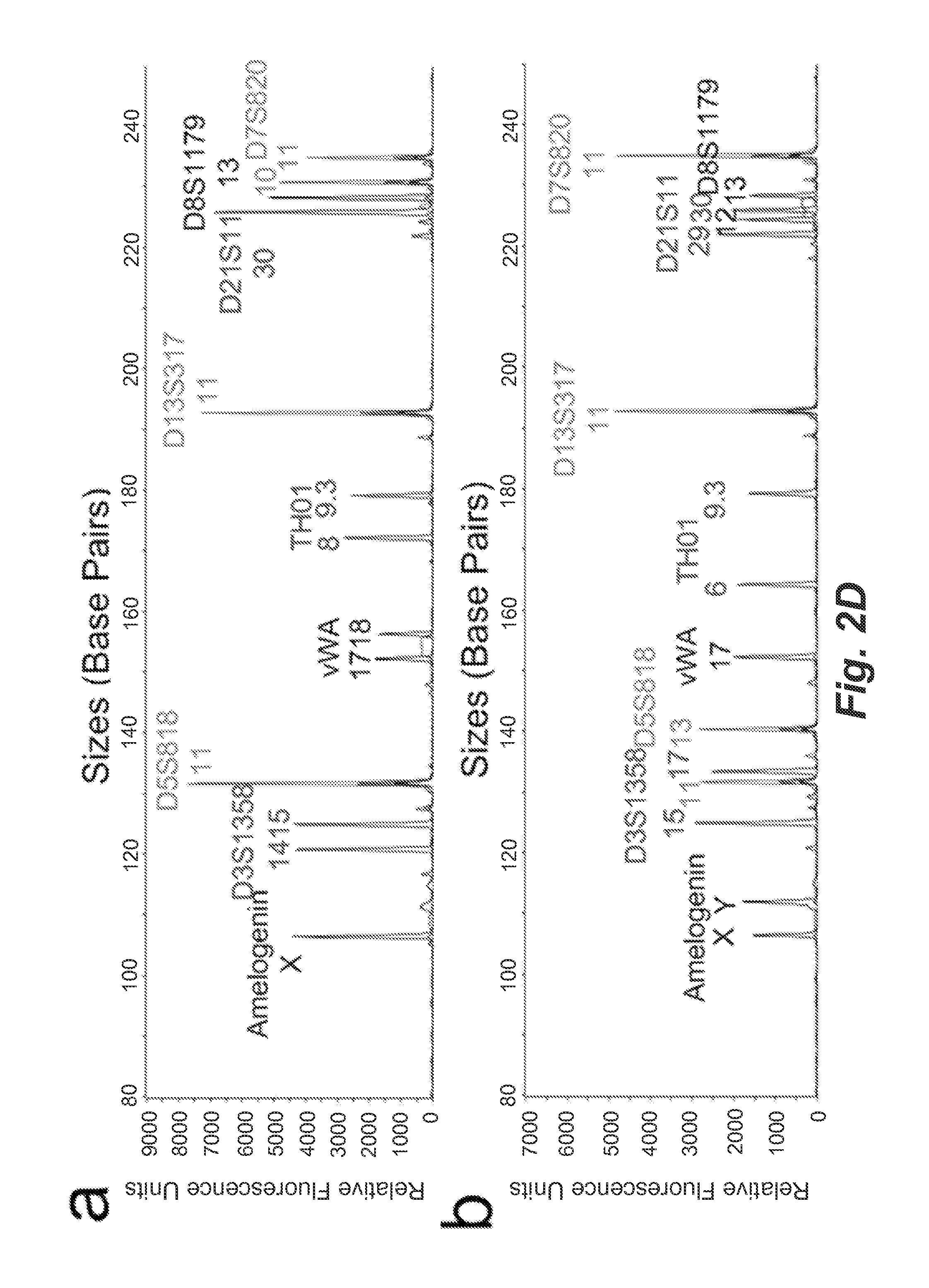Single-cell forensic short tandem repeat typing within microfluidic droplets
a single-cell, microfluidic drop technology, applied in the direction of microbiological testing/measurement, biochemistry apparatus and processes, etc., can solve the problems of difficult interpretation, limited methods, and low efficiency
- Summary
- Abstract
- Description
- Claims
- Application Information
AI Technical Summary
Benefits of technology
Problems solved by technology
Method used
Image
Examples
Embodiment Construction
[0041]In the following description, numerous specific details are set forth to provide a thorough understanding of the presented embodiments. The disclosed embodiments may be practiced without some or all of these specific details. In other instances, well-known process operations have not been described in detail to not unnecessarily obscure the disclosed embodiments. While the disclosed embodiments will be described in conjunction with the specific embodiments, it will be understood that it is not intended to limit the disclosed embodiments.
[0042]Aspects of the disclosure relate to methods of DNA profiling. In some implementations, the methods involve performing multiplex amplification of short tandem repeat DNA sequences from individual cells in microfluidic droplets and determining the tandem repeat length. In some implementations, the methods involve performing emulsion PCR amplification in single-cell microfluidic gel droplets, each droplet including a primer-coated microbead;...
PUM
| Property | Measurement | Unit |
|---|---|---|
| diameters | aaaaa | aaaaa |
| diameters | aaaaa | aaaaa |
| diameters | aaaaa | aaaaa |
Abstract
Description
Claims
Application Information
 Login to View More
Login to View More - R&D
- Intellectual Property
- Life Sciences
- Materials
- Tech Scout
- Unparalleled Data Quality
- Higher Quality Content
- 60% Fewer Hallucinations
Browse by: Latest US Patents, China's latest patents, Technical Efficacy Thesaurus, Application Domain, Technology Topic, Popular Technical Reports.
© 2025 PatSnap. All rights reserved.Legal|Privacy policy|Modern Slavery Act Transparency Statement|Sitemap|About US| Contact US: help@patsnap.com



